2 March 2011 - First public announcement of the critically endangered Greater Bamboo Lemur at Tsinjoarivo
From 28 February to 3 March, 2011, Sadabe executive director Jean-Luc Raharison has just returned from the "Second International Workshop for the Conservation of Prolemur simus" at Vakona Lodge, Andasibe. P. simus (the greater bamboo lemur) is widely regarded as the most endangered lemur in Madagascar, and among the most endangered primates worldwide. It was considered to possibly be extinct until its "rediscovery" in the 1980s, and since then, only a few hundred have been located in the wild. Jean-Luc gave a presentation publicly announcing the discovery of P. simus at Tsinjoarivo.
In July 2008, SADABE research teams establishing a new study site (Ankadivory) within Tsinjoarivo forest noted the feeding traces of a large animal in stalks of giant bamboo, similar to feeding traces known at other sites to be produced only by Prolemur simus. We received funds from the National Geographic Society to investigate these traces and search for the animal responsible for them. Our teams searched the area and compiled a database of GPS coordinates for feeding sites, yet only observed the relatively common lesser bamboo lemur (Hapalemur griseus). Realizing that P. simus is extremely difficult to locate (at other sites it had remained undetected for years), we realized we needed to continue searching.
British researcher Sarah Proctor undertook the daunting challenge of resuming the search for P. simus. After securing funding from Primate Conservation, Inc. (with additional support from Aspinall Foundation, Cotswold Outdoor, and Yorkshire Wildlife Park), Sarah led a 14-strong expedition to search Ankadivory during August and September 2010. This intensive search revealed fresh feeding traces, and finally yielded brief sightings of P. simus - some individuals are very similar to P. simus at other sites, but others (as pictured below) are quite darker. Unfortunately, Sarah's work also documented the accelerating pace of forest destruction and disturbance in the Ankadivory region, partly due to Madagascar's ongoing political crisis and the government's diminished capacity to enforce forest laws.
The next step is clear: we must act quickly to determine the size and viability of this newly-discovered Prolemur simus population, while taking steps to preserve its habitat. Ms. Proctor and SADABE are currently seeking funds to send teams of research assistants back to Ankadivory, to establish the group size, home range, and basic ecology. In the meantime, SADABE is treating Ankadivory as a priority site for our ongoing conservation and development activities (funded by Conservation International), to give local people economic alternatives to destructive deforestation and illegal selective logging. Reforestation and fish pond teams are currently visiting the area.
For more information on Prolemur simus, see: (IUCN/SSC Summary) (IUCN Redlist) (Primate Info Net)
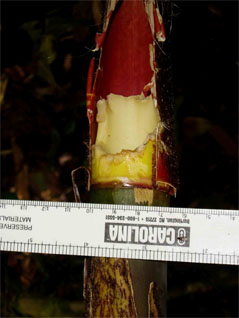 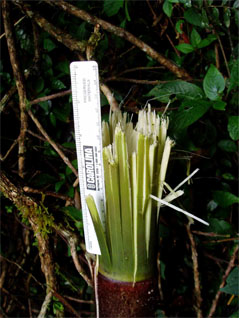 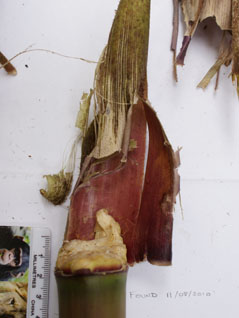 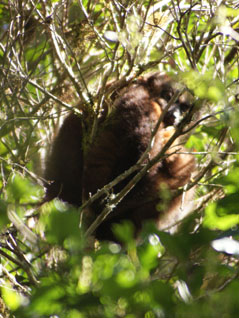 |
|---|
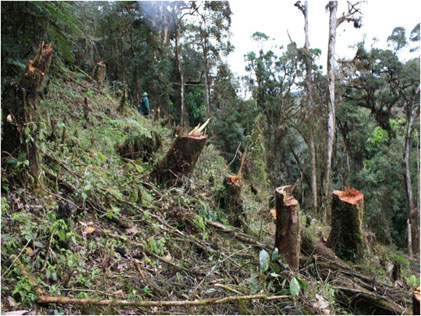 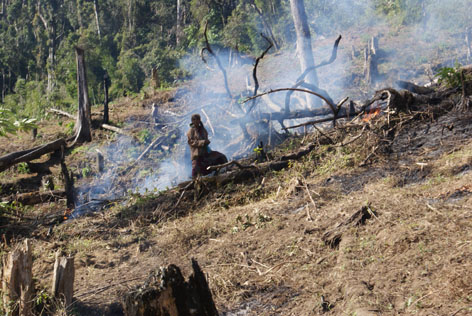 |
|---|
| Clockwise from top left: 2 feeding traces in large bamboo stems, early 2009 (Photo: Raharison); additional feeding trace, August 2010 (Photo: S. Proctor); lemur sighted in August 2010, which appears to be a dark P. simus (Photo: S. Proctor); Deforestation in the Ankadivory region, July-August 2010 (Photos: M. Irwin, left; S. Proctor, right) |
| Close Window |
